Overlooking Worksite Dangers
By: Shane Stuller
In today’s workplace, the demands to produce are greater than ever. Increased competiveness, growth objectives, and our nation’s recent economic crisis all influence the decisions organizations make in order to achieve success and maintainability. Unfortunately, the decisions made under these pressures often create a workplace riddled with dangers and unsafe behaviors.
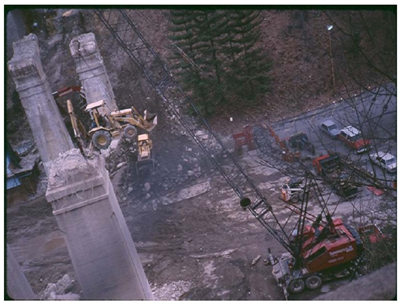
Too often, worksites have dangers that workers and supervisors look past for the sake of process execution and an on time completion. While safety is the responsibility of everyone on the worksite, it is the responsibility of the managers, executives, and owners as well. Unfortunately, many organizations simply pay lip service to safety and workplace dangers resulting in a culture that allows for unsafe behaviors.
What many companies do not consider, though, is the fact that cost and productivity are directly associated with a strong hazard recognition and safety program. Evidence has shown that accident prevention has not only saved millions of lives by reducing workplace dangers, it also contributes to increased competiveness and economic growth (International Social Security Association, 2010). This is an important factor that business leaders should consider when assessing their company health and safety objectives.
The intention of this article is shed some light on what makes up the true cost of looking past worksite dangers.
Direct and Indirect Costs
Direct costs are the insured expenses that cover the cost of the medical treatment and compensation insurance to the injured worker. In 2003, employers spent $50.8 billion, nearly $1 billion every week, on direct costs for workers hurt on the job (O'Rourke, 2005).
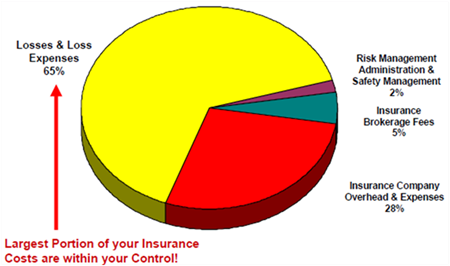
Insurance program costs. Hegburg, B., http://www.mashainc.com
While these costs can include claim costs, medical costs, and lost wages, they are just the tip of the spear when considering the inclusion of indirect costs. Indirect costs are often referred to as “hidden costs” that insurance does not cover. The following is just a short list of the effects that indirect costs can have on an organization:
- Increased Insurance Costs
- Ligation and Legal Fees
- Lost Production
- OSHA Fines
- Impact on Experience Modification
- Re-Hiring
- Re-Training
- Overtime
- Schedule Delays
- Poor Moral
- Unhappy Customers
The indirect costs can be 4 to 20 times the direct costs (Hegburg) and the impact of indirect costs can vary considerably. Consequently, the magnitude of the potential of these expenses and the importance of considering these costs cannot be understated, nor overlooked.
OSHA’s Safety Pays
OSHA has developed a program to assist employers in estimating the direct and indirect costs of work-related injuries and their impact on a business’s profitability. By using profit margin, average cost of an injury or illness, and an indirect cost multiplier, the program estimates the amount of sales a company would need to generate in order to cover those costs.
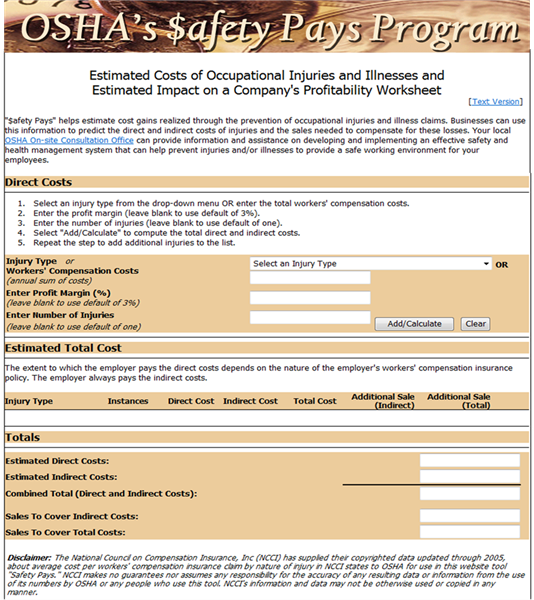
http://www.osha.gov/dcsp/smallbusiness/safetypays/estimator.html
Generating New Business
Besides evaluating the post-issue cost effects of looking past worksite dangers, companies should also consider the effects it has on generating new business. Increasingly, owners, developers, and investors are taking a closer look at who is going to be working on their projects. Negative events, accidents, and lawsuits can have serious effects on a company’s reputation. Being a headline on the evening news can cause business interruption, community backlash, and of course, loss of customers.
In addition to reputation and perception, there also has to be substantial consideration given to what is known as Experience Modification Rate (EMR), or MOD. In essence, an EMR compares a company’s workers’ compensation claims to other employers of similar size and type of business using an employer’s past experience to project future chances of risk or loss. Moreover, the rating is a controllable expense. Experience modification rating gives employers influence over the final insurance premiums they pay. It simply rewards companies that practice effective safety and risk management techniques over those who do not.
One instance of this aforementioned reward-penalize approach is during the Contractor prequalification process. Typically, some of the criterion that goes into prequalification is: integrity, work experience, qualifications of supervisors, financial conditions, and of course, safety. The graphics below demonstrate how safety plays a role in the prequalification and bidding process. Not only can a MOD Rate of 1.00 or more disqualify a contractor from bidding work, but as shown, the rate has an effect on the contractor bid price.
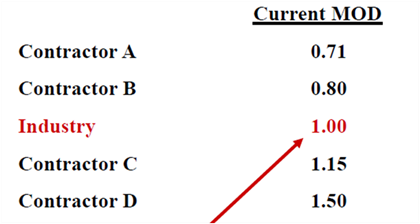
How is insurance MOD used in bidding?. Hegburg, B., http://www.mashainc.com
This example shows the current MOD Rates for four contractors along with the industry standard of: 1.00.
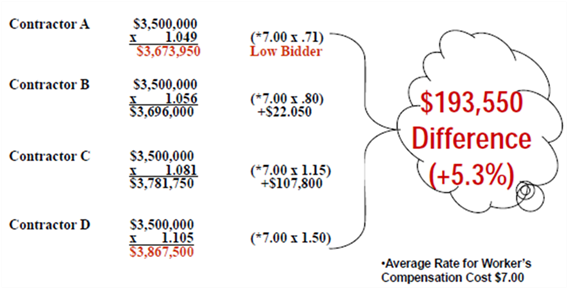
Safety impact at bid day. Hegburg, B., http://www.mashainc.com
This illustration compares those same four contractors on a $10,000,000 project with $3,500,000 in payroll.
Why Change Is Vital
Beyond the financial implications of overlooking safety and workplace dangers, there are a myriad of reasons why an organizations should look to make a positive change in the way they manage workplace safety. Below are a few of the benefits from making workplace danger recognition and safety management a vital part of your organization:
Worker Protection
• Protect your workers from all safety and health hazards that may exist at your workplace.
Create a Positive Culture
• Create a better working environment free of workplace dangers.
• Boost worker morale by involving the workforce in a culture that emphasizes a safe workplace.
• Improve communication among workers and management.
• Encourage safety away from work as workers may take safe work practices with them outside of the workplace.
Build a Reputation
• Become a leader in your industry by providing a safe and healthy workplace for your workers.
• Attract skillful workers looking to join an organization that makes providing a safe and healthy workplace a priority.
Save Money
• Lower worker compensation insurance premiums.
• Improve worker retention and reduce costly turnover.
• Reduce worker days away from work to keep operations and production running smoothly.
Despite heightening pressures to produce and ever-changing workplace conditions, organization’s costs are within their control. With a commitment, implementation, and active involvement to safety from senior management, mid-management, and the workforce, organizations can ensure workplace dangers do not go overlooked and avoidable costs do not occur.
References
Hegburg, B., The financial impact of safety. Retrieved from http://www.mashainc.com/PDF/TheFinancialImpactofConstructionSafety_BobHegberg.pdf
ISSA, (April 2004). The impact of the financial crisis on safety and health at work. Retrieved from http://www.issa.int/News-Events/News2/The-impact-of-the-financial-crisis-on-safety-and-health-at-work
O'Rourke, M., (November 2005). The impact of workplace injuries. Risk Management. Retrieved from http://www.rmmag.com/MGTemplate.cfm?Section=MagArchive&NavMenuID=304&template=/Magazine/DisplayMagazines.cfm&Archive=1&IssueID=249&AID=2922&Volume=52&ShowArticle=1
United States Department of Labor. OSHA’s safety pays program. Retrieved from http://www.osha.gov/dcsp/smallbusiness/safetypays/estimator.html
Related Topics: Monthly Safety Topics, Safety Articles